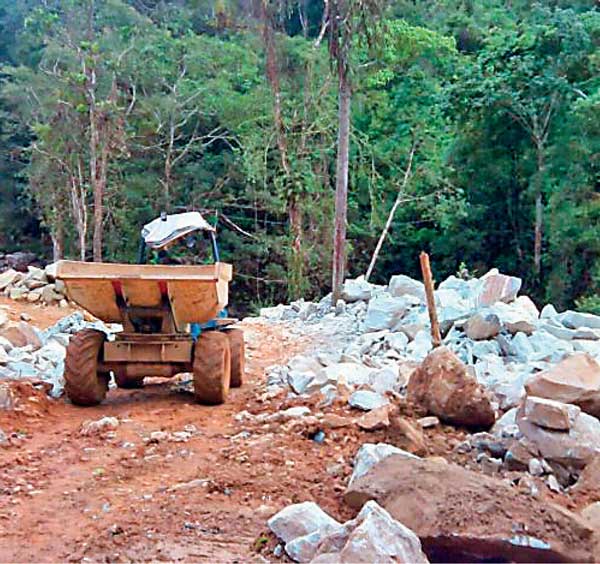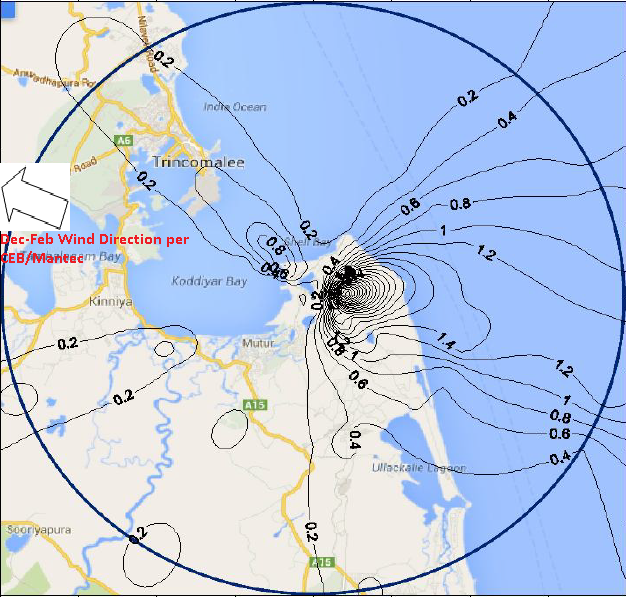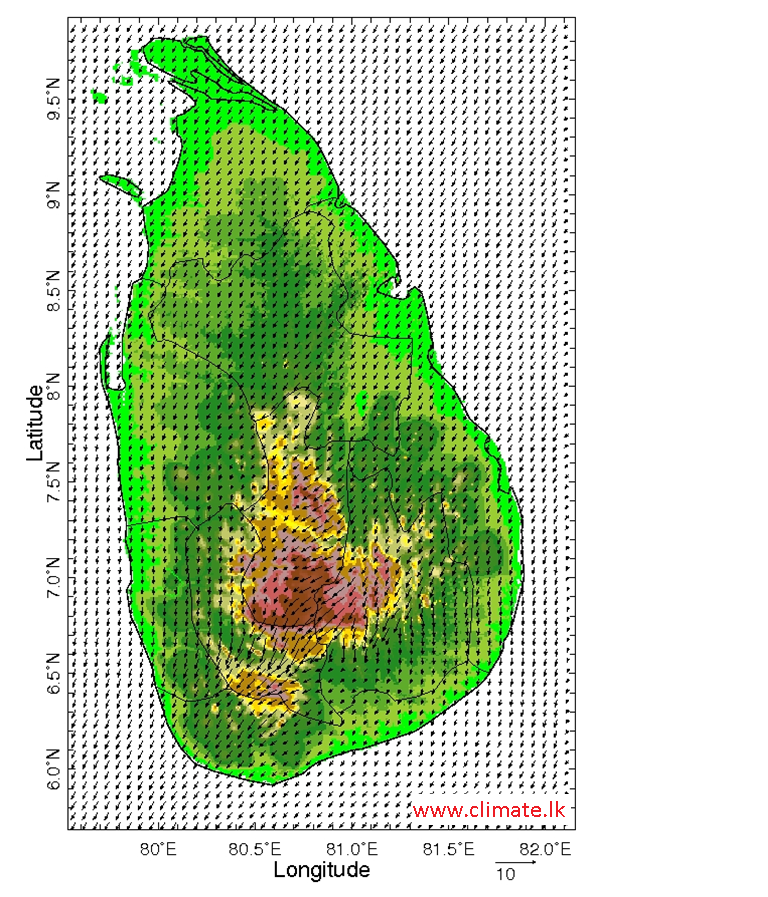
CITES trade suspension: A blow to the SL economy

The Convention on International Trade in Endangered Species of Wild Fauna and Flora, globally known as CITES, is an international treaty which has been signed among governments to ensure that international trade in specimens of wild animals and plants does not threaten their survival. Sri Lanka has been party to this agreement for over 20 years but the poorly structured national legislation has confined Sri Lanka to ‘Category 3’.
In a Notification document which was drafted earlier this year, it was stated that Sri Lanka was still a Category 3 Party due to poor national legislation to implement CITES which in other words mean that Sri Lanka doesn’t have the necessary legislation but has been Party to the Convention for more than twenty years as of March 2013. Therefore Sri Lanka would face “a suspension of commercial trade in specimens of CITES-listed species”. Upon being blacklisted by this specific convention, Sri Lanka will be deprived of its GSP Plus concession as well.
Is it really a matter of legislation? How far should domestic legislation reach? How can this suspension be overcome? In order to shed light on these issues, the Daily Mirror spoke to a few individuals of expertise:
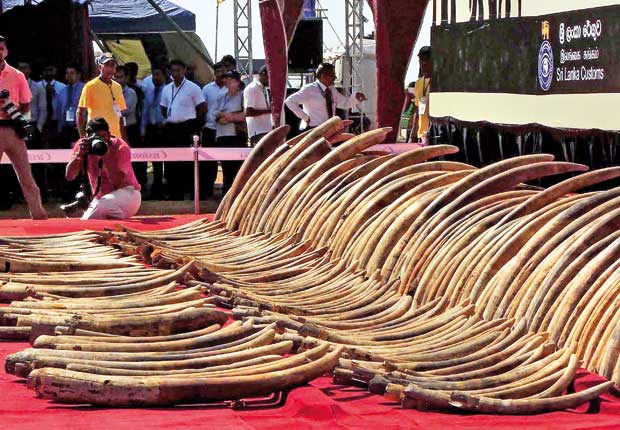
“Domestic legislation doesn’t address international trade adequately”
Manori GunawardenaCountry representative to the Born Free Foundation, Manori Gunawardena said that Sri Lanka has been a signatory to CITES since 1978, thereby demonstrating a strong commitment to the protection of species endangered by international commercial trade. “Sri Lanka’s national legislation is strong on conserving listed species from exploitation and is committed to protecting its natural assets within its borders. However, while domestic legislation serves to enforce infractions locally, it does not address international trade adequately.”
“Being part of a major trade route, recent detections of wildlife contraband of both native and non-native species have come to light. The detection of the large African ivory shipment, the regular confiscation of “agar wood” (“walla patta”, a native tree), and the reported online sale of endemic Sri Lankan lizards in Europe all indicate persuasive arguments to supplement the country’s domestic legislation with the provisions of CITES, a treaty to which 182 sovereign countries are signatory. Sri Lanka has taken a proactive stance in combating the illegal trade in wildlife and at the upcoming CITES meeting has co–proposed improved protection for the African elephant, Indian pangolin, mobular ray and silky and thresher shark.”
Prof. Sirimal Abeyratne“Sri Lanka shouldn’t depend on these types of concessions”
Speaking to the , Prof. of Economics Sirimal Abeyratne said that having no legislation for an issue like this is also a weakness. “The GSP Plus concession is mainly benefiting exporters because it helps them to maintain their competitiveness. But the major concern here is that these concessions should only be used temporarily. When a country is developing and has established its export market, it shouldn’t depend on these types of concessions. Such a country should compete through quality and prices.”
“The legislation will be gazetted soon” R.M.D.B Meegasmulla
Speaking to the Daily Mirror, Ministry of Sustainable Development and Wildlife secretary R.M.D.B. Meegasmulla said there was still some time remaining to get the clearance. “The Attorney General’s department has given us a clearance on this regard and we will be gazetting the legislation. We still have time till September and so far we haven’t been given a notice saying that we will be blacklisted. There were a few delays but we will recover them soon.”
“If we are black-listed it will affect our economy” Samantha Gunasekara
Speaking to the , ex-Deputy Director of Customs, Samantha Gunasekara said that for the import or the export of any species, the CITES is not a legal permit. “We first need to have the national legislation. There are 47 countries who are on the verge of getting black-listed by the CITES due to lack of proper legislation. Exotic and aquamarine species like sea horses have been listed as protected under the CITES agreement. We have signed it as facilitation but many other countries have engaged in illegal wildlife trade although they are party to the convention. If Sri Lanka gets blacklisted, it will affect our economy and the GSP Plus scheme will be removed from the country.”
“DWC has not communicated with us” CITES Secretariat
The CITES Secretariat when contacted, said “The CITES management authority in Sri Lanka, the Department of Wildlife has to date not communicated progress on national legislation to the Secretariat.”
“We are equipped with the necessary legislation” Jagath Gunawardena
Speaking to the , Environmental lawyer and Attorney-at-law Jagath Gunawardena said that in terms of legislation we have gone beyond the CITES agreement. “For example the Flora and Fauna Protection Ordinance (FFPO) Section 37 and Section 40 clearly state that the export of wild animals is illegal. But we have imposed zero tolerance on the export of wild animals or any for trade purposes. Also according to the document it is clearly visible that Sri Lanka is not alone in getting suspended. There are certain matters that need to be taken in to consideration. One is the fact that we have the proper legislation. Second is that the CITES requires a scientific body and under Section 35 of the FFPO we have many of them including Zoological Gardens. Then there should be an enforcement authority and we have the Customs department for that. Both section 40 which speaks about exports and section 35 which speaks about imports empower the Customs department to deal with such transactions as it’s an offence under the Customs Ordinance. As such these particular areas are covered. Then back in 2007 Prof. G. L. Pieris, who was the then Foreign Minister wanted compliance with the CITES for the GSP Plus. There was a committee to look in to the GSP Plus compliance and CITES was one of the requirements. The provisions in the FFPO were sufficient for the EU and therefore they granted us the GSP Plus concession.”
Stressing further on this regard, Mr. Gunawardena said that CITES is a trade convention and that it provides a way for trade. “Back in 1995 this convention downgraded the protected status of corals to Appendix 2. But in the FFPO all corals are a totally protected species and therefore we were able to circumvent any adverse situation. On the other hand, certain countries have openly violated the CITES convention when it comes to the illegal trade of ivory for example, but the CITES has not taken any action against them. Therefore we can be a party to the CITES but they can’t do anything detrimental to our position. What should be done at the moment is that someone should show the CITES that we are equipped with the proper legislation. But on the other hand there are certain species that should be protected under the CITES which we have failed to do. For example marine organisms like the manta ray and sea horse which comes under the purview of the Fisheries ministry should be protected. The Aquatic Resources Department is quite slow and they should gear themselves to work more effectively, when it comes to priorities and enacting legislations.”
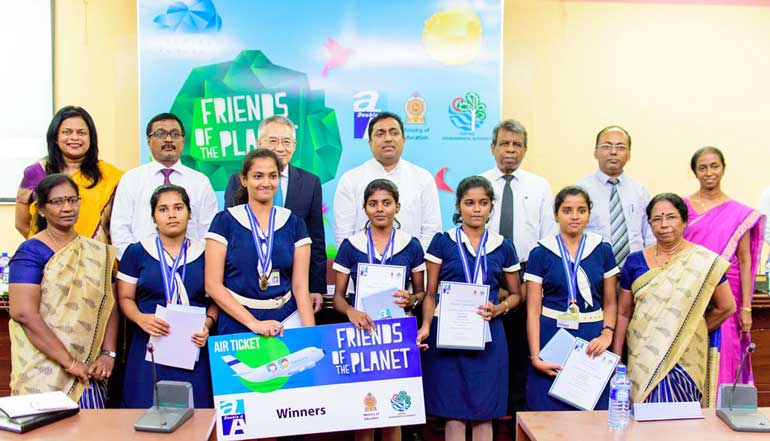
Double A Sri Lanka rewards winners of ‘Friends of the Planet’ campaign
Back row (from left): Chethika Hapugalle, General Manager, Double A Pulp and Paper Company Sri Lanka; A.S. Hewage, Additional Secretary – School Activates – Ministry of Education; Thirawit Leetavorn, Vice President, Double A Pulp and Paper Company Limited; Akila Viraj Kariyawasam, Minister of Education; W.M. Bandusena, Secretary, Ministry of Education; M. J. J. Fernando, DDG – Environmental Education & Awareness Division, Central Environmental Authority; and Damayanthi Balasuriya Director of Education – Agriculture and Environmental Studies. Front row (from left): A. Thevakanthan (Project Teacher, Vincent Girls’ High School, Batticaloa), students Primraj Ravichandra, Abarna Kumarakuruparan, Litharshika Sadatchararajah, Thuwaraha Suntharalingam, Tharshana Thevaraj and Principal, Vincent Girls’ High School, Batticaloa R. Kanagasingam
Vincent Girls’ High School, Batticaloa emerged Overall Winners in the final round of the ‘Friends of the Planet’ project conducted by Double A in collaboration with the Ministry of Education and the Central Environmental Authority.
Mayurapada Central College, Narammala and Pallivasalthurai Muslim Maha Vidyalayam, Kalpitiya clinched second and third place respectively.
The awards ceremony was held recently at the Ministry of Education auditorium. The Chief Guest at the occasion was Education Minister Akila Viraj Kariyawasam. Also present were Prof. Lal Mervin Dharmasiri from the Central Environmental Authority and Thirawit Leetavorn, Senior Executive Vice President of the Double A (1991) Public Company Ltd.
Members of Vincent Girls’ High School, Batticaloa were given tablets and will be sent on an all-expenses-paid trip to Thailand where they will see the award-winning KHAN-NA sustainability project carried out by Double A.
The paper from the KHAN-NA project is a landmark effort to make optimum use of the vacant space between rice fields in Thailand, owned by local farmers. During the process, the KHAN-NA project’s previous unproductive land is transformed into a productive resource, which provides additional income to over 1.5 million farmers when they sell the sustainable fibre-source back to Double A.
The teams from Mayurapada Central College, Narammala and Pallivasalthurai Muslim Maha Vidyalayam, Kalpitiya received valuable tablets and certificates.
Double A ‘Friends of the Planet’ is a CSR project which was initiated in February 2016 to promote and educate schoolchildren island-wide on environmental protection. Seven schools were selected to implement their innovative projects under the guidance of the Ministry of Education Director of Education (Agriculture and Environmental Studies) and the Central Environmental Authority. This project was monitored by the Director of Education (Agriculture and Environmental Studies) and the Central Environmental Authority.
According to the campaign guidelines, the competing schools selected a team of five students above the age of 15 to come up with a cost-effective and groundbreaking solution to an environmental problem.
Under the guidance of a teacher, each team developed and implemented a project within a period of three months. Upon completing the project each team compiled a detailed report which they presented to the expert panel of judges from Double A for evaluation.
“We are pleased to announce the winners who, with their creativity and intellect, were able to craft solutions to larger problems and awareness of how important it is for everyone to band together to save the planet. Armed with innovative ideas, these students are important stakeholders in a new way of life that will help save the planet. Judging from the success of this particular campaign, our belief in young minds was well-founded,” said Leetavorn, who flew into Colombo for the ceremony.
Leetavorn is the Senior Executive Vice President of Double A. He is a key member of the team leading the global consumer expansion of the Double A brand. He currently leads market development for Europe and the Americas.

Biodiversity greater inside Earth’s protected areas
Biodiversity is greater inside the world’s protected areas, scientists have been able to show for the first time.
There are 15% more individual plants and animals and 11% more species inside than outside protected areas, according to the largest analysis of biodiversity in terrestrial globally protected areas to date.
The study, carried out by the University of Sussex, the Natural History Museum and the UN Environment Programme’s World Conservation Monitoring Centre, analysed biodiversity samples taken from 1,939 sites inside and 4,592 sites outside protected areas.
“We have been able to show for the first time how protection effects thousands of species, including plants, mammals, birds and insects. This has provided us with important insights into these areas – which previous studies were not able to do,” said co-lead author of the study, Dr Claudia Gray, from the University of Sussex.
Protected areas are widely considered essential for biodiversity conservation.
However there has been some doubt over their success, with problems including lack of effective management, increasing human pressures and inadequate government support.
Currently around 15% of the world’s land and 3% of the oceans are protected, and the Convention on Biological Diversity has pledged that this will rise to at least 17% of land and 10% of marine areas by 2020.
New global biodiversity database
But these results demonstrate that protection zones do benefit a broad range of species, and governments must continue to recognise and support them, said Dr Jörn Scharlemann, from the University of Sussex.
“Protected areas do not currently benefit all species – but what we have shown in our study is they have the potential to help us conserve some of the most biodiverse areas on Earth – which is why they vitally need increased global support.”
The study used a relatively new global biodiversity database called Predicts (Projecting Responses of Ecological Diversity In Changing Terrestrial Systems), which contains field data from hundreds of scientists documenting how local terrestrial biodiversity responds to human impacts.
The nearly four-year-old project has unprecedented geographic and taxonomic coverage, with more than 2.5 m biodiversity records from more than 21,000 sites, covering more than 38,000 species.
However this data only accounts for around 1% of all known species.
Previous regional or global studies of protected areas were limited to relying on information from satellite photos to examine changes in forest cover.
Prof Andy Purvis, one of the paper’s authors from the Natural History Museum, said: “This study shows how important questions in conservation biology can be tackled by joining forces. Hundreds of scientists from dozens of countries have generously shared their hard-earned data with us. Each one of those data sets is like a piece of a jigsaw: the overall picture only becomes clear when you have all the pieces and can put them together.”
Needs of our ever-growing population
The study, published in the journal Nature Communications, also showed that protection is most effective when human use of land for farming is minimised, suggesting better management of existing protected areas could more than double their effectiveness.
The global protected area network was 41% effective at retaining species richness and abundance, the paper judged.
Dr Samantha Hill, from the UN Environment Programme’s World Conservation Monitoring Centre, said: “Humanity faces difficult decisions as to how best to protect biodiversity while providing for the needs of our ever-growing population. This study provides new understanding into the biodiversity found at the intersection of protected areas and human land-uses.
(Souce :30/07/2016 Daily News http://www.dailynews.lk/?q=2016/07/30/features/88973)
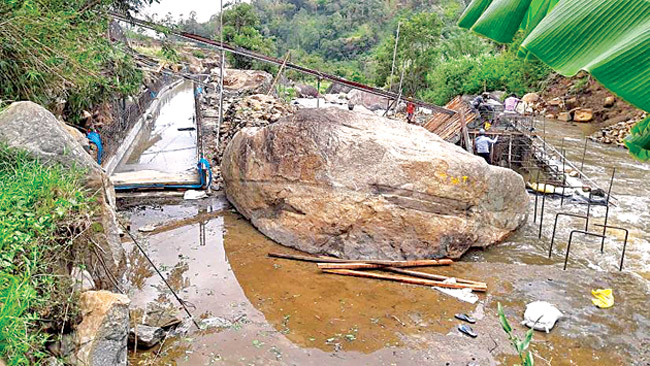
Call to protect environment from mini-hydro power projects
Rainforest protectors in Sri Lanka requested the authorities to take immediate corrective steps to stop the destruction taking place due to the rapidly spreading mini-hydro power projects throughout the wet zone. They urged that the national policy on renewable energy be focused on technologies that do not cause ecological destruction to catchment areas.
According to rainforest protectors, water sources, including main streams around Mandaram Nuwara and Hanguranketha have became the latest victims of the rapidly spreading mini-hydro projects. They have became a threat to the livelihoods of the people in these areas.
Agriculture is the main livelihood of the people in the Hanguranketha, Walapane, Delthota and Pathahewaheta Divisional Secretariat Divisions. They are fulfilling their water requirement mainly from Belihul Oya, Ma Oya, Thalathu Oya and Marassana Oya. These areas have faced a huge threat with the commence of the construction of new mini-hydro power plants.
Social, economical and environmental issues are rising up with the construction of the Deegalhinna mini-hydro project based on Deegal Oya. More than 300 acres of paddy fields around one kilometre of Deegal Oya have gone dry due to the obstruction of water supply. New hydro projects have caused the drying of Ethawatunuwala waterfall and Deegalahinna waterfall by threatening endemic plants and animals.
Source : Daily News 30/07/2016 http://www.dailynews.lk/?q=2016/07/30/local/89011

Elephant-human conflict, the most crucial issue not even identified

Since 1950, a minimum of 4,200 elephants have perished in the wild as a direct result of the conflict between man and elephant in Sri Lanka. During the last 12 years, a total of 1,464 elephants were killed, along with 672 humans
The suffering of poor farmers due to invading elephants is being highlighted practically every-day in media and newspapers. According to media reports, elephants invade farmers’ cultivations, destroy crops and damage their homes.
Villagers demand that the Government should build electric fences to safeguard them from invading elephants. Meanwhile, environmental organisations complain of the numbers of elephants killed due to gunshot wounds as well as jaw-blasting explosives (hakkapatas) used by the farmers, and those fall into farmers’ unprotected wells and irrigation channels.
Reducing elephant population
Centuries ago, elephants were widely distributed from the sea level to the highest mountain ranges. Portuguese complained of elephants approaching their fortress in Colombo in the evenings. From early 19th century, British rulers sold the upcountry forest lands for commercial plantations of coffee, and afterwards tea.
Until 1830, elephants were so plentiful, the British declared the elephant as an agricultural pest and their destruction was encouraged. The British indulged in shooting elephants as a sport and an army major was supposed to have killed over 1,500 elephants. Between 1829 and 1855 alone, more than 6,000 elephants were captured or shot. The shooting of elephants drove the remnant herds to the lowlands. Currently, there are no elephants in the hill country, except for a small herd that migrates occasionally.
By the turn of the 20th century, elephants were still distributed over much of the island. The ‘Resident Sportsman’s Shooting Reserve,’ an area reserved for the sporting pleasure of British residents, is the current Ruhuna National Park. In the early 20th century, dry zone ancient reservoirs were reconstructed for irrigated agriculture, irrigation systems were rehabilitated and people were resettled. After independence, Gal Oya, Uda Walawa, Mahaveli and other development schemes resulted clearing many thousands of acres. As a result, elephant habitat in the dry zone has been severely fragmented.
During Lanka’s armed conflict, elephants were killed or crippled by land mines. Between 1990 and 1994, a total of 261 wild elephants died either as a result of gunshot injuries, or were killed by poachers and land mines. Between 1999 and 2006 nearly 100 wild elephants were killed every year. In 2006 a total of 160 elephants were killed.
The Sri Lankan elephant population is now largely restricted to lowlands in the dry zone, east and southeast. Elephants are present in wild life reserves and a small remnant population exists in the Peak Wilderness Sanctuary. Apart from Wilpattu and Ruhuna National Parks, all other protected regions are less than 1,000 km2 in extent. Many areas are less than 50km2, and not large enough to encompass the entire home ranges of elephants that use them.
In the Mahaweli Development Area, protected areas as Wasgomuwa, Flood Plains, Somawathiya and Trikonamadu national parks have been linked to give an overall area of 1,172km2 of contiguous habitat for elephants. However, elephants in this country seem to feel shy of using corridors designed by man. Resulting, about 65% of the country’s elephants range extends outside the protected areas into human settlements and agricultural areas. It is claimed that Sri Lanka has the highest density of elephants in Asia.
The “Sri Lankan elephant” (Elephas maximus) is one of three recognised subspecies of the Asian elephant, and native to Sri Lanka. Since 1986, Elephas maximus has been listed as endangered by IUCN as the population has declined by at least 50% over the previous 60-75 years.
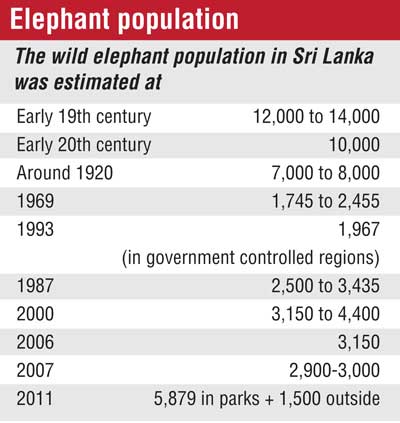
Domesticating elephants
Sri Lanka has a long history of domesticating elephants – back to the times when Sinhala Kings kept them for military purposes and to enhance the majesty of their reign. Today, domesticated elephants are engaged in following work:
- Logging – particularly in forested areas
- Construction – Historically elephants have played a big role in the construction of ancient historical cities.
- Tourism – elephants are engaged to give tourists rides. The elephant orphanage at Pinnawela operated by the National Zoological Gardens is a big tourist attraction.
- Ceremonies and temple work – Elephants participate in annual temple processions all over the country. Often they are richly caparisoned and are central to proceedings. Other elephants are permanently kept at temples and houses as a status symbol.
Feeding the elephants
An elephant consumes up to 150kg of plant matter per day. According to experts, local elephants feed on a total of 116 plant species, including 27 species of cultivated plants. More than half of the consumed plants are non-tree species as shrubs, herbs and climbers and 19% are grass. Young elephants tend to feed mostly on grass varieties. About 5 sq.km of land is needed to support an elephant in its forest habitat.
Human-elephant conflict
With the reduction of their habitats, elephant population have broken up and some herds have got pocketed in small patches of jungle. With their movement restricted, food and water sources depleted, elephants wander into new cultivated areas, which were their former habitat, in search of food and find a ready source of food and even stored paddy is not spared.
With their large size and equally large appetites, elephants can easily destroy the entire cultivation of a farmer in a single night. Therefore the farmers look upon the elephant as a dangerous pest and would rarely regret its disappearance from their area. Thus the conflict between man and elephant has become the most serious conservation problem facing the Department of Wildlife Conservation.
The ecological and social costs of clearing forests to resettle villagers have proved to be very high.
Since 1950, a minimum of 4,200 elephants have perished in the wild as a direct result of the conflict between man and elephant in Sri Lanka. During the last 12 years, a total of 1,464 elephants were killed, along with 672 humans.
Causes of conflict
The conflict between the two parties is due to the food shortage to the elephants caused by:
- Reducing forest area due to development works
- The rape of the forests
- Villagers encroaching into forests
- Grasslands being used by farmers’ cattle
- Low forest quality
Reduced forest area
During the past few centuries forest area was reduced due to cultivations, depriving elephants their natural habitats. The lands consist of mountainous and valleys or rolling lands with highlands and low valleys. Over the centuries, top soil from mountains and highlands got washed off due to rain and sediments were deposited in valleys. These fertile valleys support lush vegetation and provide most food to elephants.
During the development schemes, the lands below the irrigation canals were allocated to settlers, and mountains and highlands with poor soils were earmarked as animal sanctuaries. But none looked into the ability of the high lands to supply animal needs.
The rape of the forests
Along with the reduction of forest area, the quality of forests that produced food for the elephants and other animals reduced due to human action. With the increase in human population demand for timber increased, which were obtained from the forests. Today, timbers as satin and ebony with their 200-year maturity are almost extinct.
Most hardwoods take long years to mature; they also make low demand from the soil fertility and even water. The grain patterns of their wood, a result from the dry and wet spells the tree underwent over the long growing period. Today, most popular timber varieties have disappeared from forests. While our indigenous valuable trees have disappeared, spaces they occupied were replaced by fast growing and quick multiplying thorny invasive plants, mostly imported to the country as ornamental plants. Today, most of our forests constitute of shrubs, devoid of tall trees.
Village encroachment
During colonisation, landless families were settled in development schemes. After decades, with children grown up and raising families of their own, original lands are insufficient. They encroach into low fertile valleys depriving elephants from their food supply. While villagers encroach into forests, authorities under political pressure turn a blind eye. When elephants enter their traditional lands, villagers complain and demand electric fences to keep elephants at bay. Even the elephant corridors are not safe from encroachment.
Grasslands being used by farmers’ cattle
Grass are a major component of elephant’s food and is found mostly in lands undergoing periodical floods, also reservoir beds when water levels go down. Cattle farmers have found convenient to drive their cattle into traditional elephant grasslands, depriving elephants their food.
Low forest quality
With the forests being deprived of their tall trees for human needs, their slow growth give rise to gaps being filled with shrubs. The eating habits of elephants reduce foliage of consumable plants, meanwhile non-consumables, especially thorny shrubs continue to expand. Currently, most forests are being filled with thorny shrubs.
Wildlife conservation
During the last century, Sri Lanka has established probably the widest, wildlife conservation areas in Asia. Most located in the low country dry zone, where human pressure was not serious enough to prevent the recovery of elephant numbers. The recovery was slow at first, but under the management of the Department of Wildlife Conservation (DWC), the number of elephants seems to have picked up.
The DWC has identified several areas where the elephant-human conflict has become serious and has adopted following conservation measures to mitigate the conflicts:
- Elephant deterrence – the use of noise, flashes and shock tactics to chase elephants
- Establishment of new National Parks and increasing the size of conservation areas.
- Establishment of elephant corridors – to allow the safe passage of elephants from one habitat area to another.
- Habitat enrichment of elephant areas to enhance carry capacity
- Translocation of elephants to less populated areas
- Electrical fencing – forming solid barriers between farmland and elephant habitat
- Ex-site conservation and breeding programme
- Control poaching
- Synergising elephant conservation with economic development.
Today, conservation efforts are in full force to protect the species. Under Sri Lankan law, the penalty for killing an elephant is death.
Enforcing legislation
Although killing of an elephant could bring death penalty, never has been an occasion when a culprit was brought to court, although the entire village is aware of the gunmen and the users of ‘hakkapatas’. If the Grama Sevaka is questioned when the elephants are attacked or when forests are set on fire some control of elephant killing could be averted.
Invasive plants
While elephant numbers remained comparatively high, their food supply has decreased drastically, with the loss of their habitual grounds due to deforestation, irrigation schemes, human settlements and encroachment. Many reasons are brought out for elephant attacks on village settlement, but the most important reason is not even mentioned: the gradual reduction of availability of food (leaves) to elephants, due to widespread encroachment of mostly thorny, fast-spreading invasive plants into jungles, shrubs to low and even highlands of the country. This aspect has not been raised even by the Environmental organisations.
Amongst the invaders are giant mimosa (maha nidikumba) brought to the country on the backs of goats as food for IPKF senior staff, now are widespread all over the country. A few decades ago, Spiny bamboo (Katu una), ‘Bambusa bambos’ was planted in Minneriya Wild Reserve to provide long fibre material for the Valachanai Paper Factory. The factory never used the bamboo, but the plant has been spreading fast in the park. The bamboo does not serve any purpose and the thorns on the plant keep the elephants away.
Our entire country, jungles, shrubs, household gardens, marshes and even the Horton Plains has been inundated by invasive plants. Some of them are commonly known by Sinhala names giving the impression of being indigenous plants, for example Wel Atha “Annona glabra” originating from West Indies. From the low land opposite the Ministry of Environment to marsh adjoining Weras Ganga Park bordering Bellanwila temple are almost covered with Wel Atha and indigenous plants as Kadol have disappeared. Gandapana “Lantana camara” from W. Indies and Podisingho-maran or Eupatorium (Japan Lantana) are spread throughout the dry low country. In addition, Andara (Dichrostachys cinerea) and Giant eraminiya are widespread.
A common factor in all above are being thorny and are not consumed by any animal (except the fruit) and are fast-spreading. An indigenous plant Diyapara “Dillenia triquetra” (similar to Godapara, but shorter and grows in marshes) is fast spreading especially in the marshes and adjoining high grounds in the south and west is visible when travelling on the Southern Highway.
Settlement of conflict
The basic reason for the conflict is the shortage of food to elephants resulted from clearing of jungles, removing valuable jungle trees and plants, encroachment of low fertile valleys by villagers, taking over of natural grasslands by cattle farmers and poorly-planned elephant corridors. To prevent further complication of the problem and to avoid elephant attacks on village settlements, further encroachment of lands by farmers need to be completely stopped and the villages heavily subjected to elephant attacks need to be relocated, although the move even on encroached land would be heavily resisted by villagers and some politicians.
But the most important reason is the encroachment of thorny invasive shrubs, filling the voids created by felling of trees and clearing jungles. As these invasive shrubs are not consumed by animals, their growth continue unabated with their prolific multiplying character. These invasive plants are not confined to jungles, but have spread over the entire country. The complete destruction of these plants is an urgent necessity to safeguard our environment, agriculture and to provide food to elephants, wild animals and cattle. They are also a threat to indigenous plants, Kadol (Rhizophora mucronata) has been almost wiped out by Wel Atha. These invasive plants need to be removed and destroyed, in addition the gaps caused by the removal need to be replaced by indigenous trees, plants and grass varieties consumed by elephants.
The threat created by the invasive plants is the heaviest environmental damage the country had undergone, but was not recognised. Their eradication and the replacement with indigenous plants, would involve producing and planting millions of plants in wide variety, would be beyond the capacity of any private or Government agency. The only possibility is the mobilisation of the Government Armed Forces who would have to face a bigger enemy than the LTTE, and elimination of the enemy may take over 30 years, considering that left-over roots could reappear with the next rain. The task would be the responsibility of Minister for Environment who also happens to be the Commander of the Armed Forces.
Our President has been addressing the school children on environmental issues, now is the time to match the words with deeds. Over to you, Mr. President.
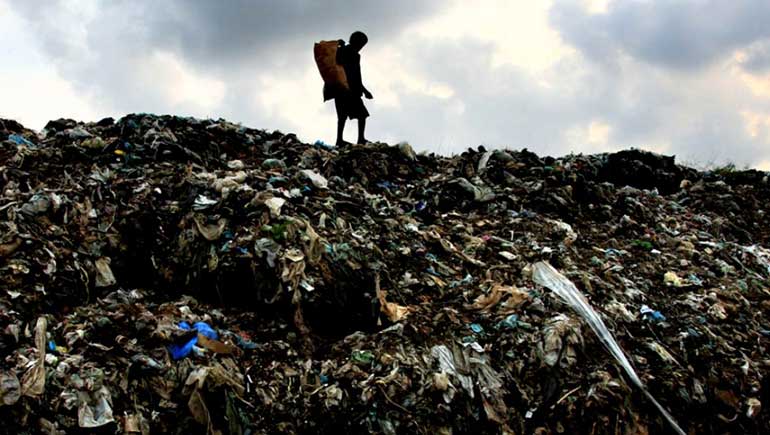
Sustainability now: The waste challenge
Shifting waste from one place to another is no solution; nor is burning it in the backyard. The moment waste is understood as resource, a multitude of solutions are already available to develop a waste free Sri Lanka
The common understanding of “waste” is equivalent with garbage and thus with “an unusable or unwanted substance or material”. Waste, in this case, is perceived with a negative underlying character and regarded as something no one would consider valuable; it is considered as a problem and an unwanted side-effect of our fast, wasteful consumerism and disturbing factor when disposed in public.
Essentially, each and every product is based on a number of resources which were extracted somewhere around the world and often assembled somewhere else and finally delivered into our shops. Where with many basic food products it is still easy to see what they contain and where they come from, it is nearly impossible to find out ingredients and production processes of more complex products such as for example electronic items or cosmetics.
After using an item for some time, we feel we do not need it anymore, therefore we dispose it into our bins which are emptied into garbage collection trucks which bring our waste into recycling centres in the best case or into landfills in the worst case; and through this process, items are becoming “waste”. However, even if the form of the product is changed, it still contains at least part of the original resources which have been used to produce it. It is still a sum of resources which are simply considered not useful anymore.
Besides garbage, “waste” also means “anything unused, unproductive or not properly utilised” and “failed to take advantage of or used for profit”. What if waste is a resource by itself? What if a complete circular economy is possible and even a feasible concept?
This is easy to understand in the case of systems which encourage repairing and reusing of items. Besides the benefit that the product is not disposed and can be used again, a number of professions arise around these activities and there is some money to be made – by those who offer repair services and by those who do not need to buy new products.
Repairing is not a new concept, however it is still limited to certain products such as electronics, cars, shoes, handbags and similar items. For a large amount of products there is no service centre, no place to bring it to. Also, often consumers need to pay more for repairing a broken item than buying a new one, thus they chose disposal instead of repair. A diverse system where any item can be repaired will not only create new jobs but also save money and reduce resource extraction as well as garbage.
Furthermore, reusing, donating and sharing are other possibility to make use of items instead of disposing them. In Sri Lanka we have a great culture of helping each other were many in the society who have more, give to those who have less. Concepts such as reusing, sharing and exchanging items can create another dimension where new consumption as well as waste creation are prevented.
In addition, making use of items which can be remodelled to new items, “upcycled”, is another area where materials which are considered not useful anymore, can be developed into completely new items. This thought is also nothing new. For years communities have reused or upcycled items simply because they could not afford to constantly buy new items.
Given the lack of choice of products, communities become innovative and use the older products in new ways. Only the oversupply of new, cheap products makes it easier for consumers to buy those instead of thinking of creative ways of reusing their old items. Recently this concept became more of a trend rather than an expression of lack of choice.
Finally, recycling of various materials has proven successful over the years supplying companies with the necessary raw materials and reducing land fill.
Acknowledging these efforts, a comprehensive circular economy approach tries to fulfil the paradigm of zero-waste creation integrating the above mentioned viewpoint that there is no such thing as “waste”. Every extracted resource which is used to develop a product, can be used and consumed, and when finally losing its initial purpose, it can be reused again in another context. By creating a circulation of resources, no material will go to waste, everything is considered a resource of something else.
Around Colombo and Gampaha region, enormous amounts of garbage have been collected over the past years. Dumping grounds such as the Meethotamulla dump site have been said to be unusable due to their height, odour and various environmental hazards. Current solutions are transferring waste into other landfills as for example in Puttalam – shifting the waste will only shift the problem but not solve it.
Sri Lanka has announced other initiatives which seem promising and more sustainable such as the campaign of the CMC on a new solid waste collection and recycling process educating the public to segregate waste, linked to a collection system and only disposing organic waste into landfill. Such activities are crucial if Sri Lanka wants to progress towards the SDGs.
Also, waste to energy projects have been receiving high priority. At present it is estimated that Colombo produces 700 tons of garbage per day. In this regard, the Sustainable Energy Authority in collaboration with the CMC have implemented the first pilot project at Jathikapola in Narahenpita. This project is deemed to generate 26,280 kWh of electricity per annum.
Additional bottom up initiatives intend to create communities and systems where sharing, exchanging and reusing of items are practiced. These activities not only facilitate a mind-set shift but also influence a change in consumer behaviour.
Solving the “waste challenge”
To solve the “waste challenge” in Sri Lanka, the first step which seems necessary is the mindset change towards a different understanding of what waste is and how it can be used as resource successfully. The stigma of waste being useless and a disturbance has to vanish to enable a sustainable circular economy system.
Globally business, research and political and civil society actors have taken on this concept and perceive it as the future solution for the world’s waste problem – to an extent where the UK Guardian newspaper recently announced that by including concepts such as renewable energy, energy efficiency and material efficiency, the “circular economy could bring a 70% cut in carbon emissions by 2030” and “caring for items through repair, maintenance, upgrading and remanufacturing is far more labour intensive than mining and manufacturing… the number of additional jobs would likely exceed 100,000”.
Entrepreneurs and researchers worldwide are now searching for innovative solutions which help creating this circular economy and lead to zero-waste societies. Besides initiatives to reduce consumption, resource extraction and packaging all together, there are different attempts of using waste as fertiliser and construction material, source to create energy and consumer goods (clothing, jewellery, house items, etc.). Sweden is on top of the list of countries which lead the race to zero-waste by setting up comprehensive waste management systems.
Without diminishing the challenge Sri Lanka has related to its garbage and waste situation, the country is still considerable small to be able to manage the situation well and in a sustainable manner. It has the potential to become zero-waste by developing a comprehensive system including reduced resource extraction (starting with a ban on single use plastic bags for example), upcycling and recycling systems and a movement of reusing and repairing of items.
Shifting waste from one place to another is no solution; nor is burning it in the backyard. The moment waste is understood as resource, a multitude of solutions are already available to develop a waste free Sri Lanka
Source 27/07/2016 Daily FT://www.ft.lk/article/557365/Sustainability-now–The-waste-challenge#sthash.OeeJEQMe.dpuf
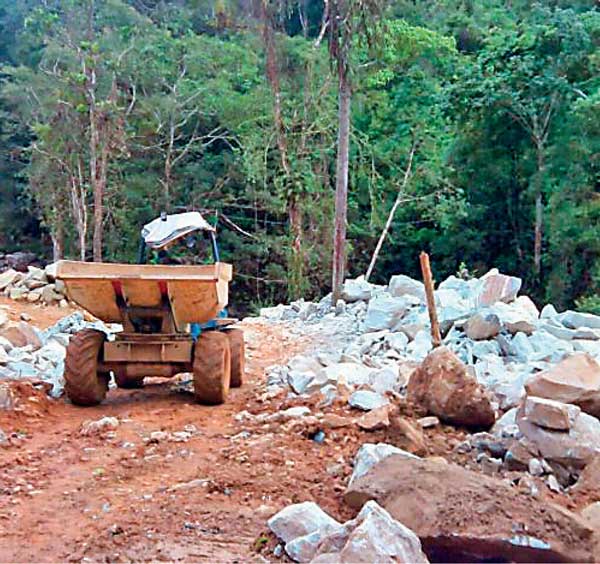
Koskulana mini hydro-power project: A disaster for ecological diversity?
Sri Lanka is blessed with plenty of rainforests that had contributed to regulating its climatic conditions over the years. Yet during the recent past, people with influential backgrounds have resorted to utilizing these natural resources for their personal benefits. A series of mini-hydro projects and hotels which were suspended due to various environmental and humanitarian concerns are subject to commencement under the purview of the Ministry of Special Assignments.
One such project that had raised concerns over the environmental-expert fraternity is the Koskulana mini-hydro project which is being developed within a ‘buffer zone’ of the Sinharaja Forest – a rainforest in Sri Lanka which has been listed as a UNESCO World Heritage Site. According to environmental experts a buffer zone is defined as an area of land which is designated for environmental protection. In an attempt to shed light on this issue, Dailymirror the spoke to a few concerned parties to inquire about the current progress of this project.
The DS has issued this land for temporary use : PILF
The Public Interest Law Foundation (PILF), a non-profit organisation established in 1999, which highlights environmental issues, has taken legal measures against this project and have filed a case in the Court of Appeal. Speaking Dailymirror to the , a representative of this organisation who wished to remain anonymous said that they were very much concerned about this issue after it was aired on television last November. “We filed a case under the complaint number 527/2015 and took up the matter in courts. We thought we should take a closer look at this project and when inquired we came to know that it was happening inside the buffer zone of the Sinharaja Forest violating certain laws and regulations. The project is being done at a border of an area which has been marked as a UNESCO World Heritage Site and I think this is a serious matter to be dealt with.
But this ongoing project doesn’t seem to be a temporary one at all. When the matter was taken up in courts a notice was issued to suspend the work. Therefore, by any chance if the developer resumes work, it would be contempt of court. We have also drafted a petition with seven parties appearing as respondents
One of the main problems concerning this matter is the fact that there has been no Environmental Impact Assessment (EIA) done addressing the pros and cons it would impose on the environment. The Central Environmental Authority has asked to stop issuing EIAs but to just submit an Initial Environmental Examination (IEE) which doesn’t include the public opinion. For an issue like this, the public opinion is very crucial because it is the villagers who will be affected in the end. An IEE is negligible when it comes to a large scale process like this. We are trying to restore this by making a request in courts to introduce the system of drafting EIAs and clarifying the issues when it comes to environmental concerns rather than drafting IEEs and white-washing a major part of the issue which needs to be highlighted.”
We filed a case under the complaint number 527/2015 and took up the matter in courts
When inquired further, the PILF has also found that the Divisional Secretary of Kalawana has given this particular stretch of land to the developer through a permit to be used on a temporary basis. “But this ongoing project doesn’t seem to be a temporary one at all. When the matter was taken up in courts a notice was issued to suspend the work. Therefore, by any chance if the developer resumes work, it would be contempt of court. We have also drafted a petition with seven parties appearing as respondents.”
The villagers were bribed to support the project : Resident
The Sinharaja World heritage site is home to many endemic species including freshwater fishes. The Koskulana River which flows through the forest is a treasure to many villagers living within this area.
Remaining under strict condition of anonymity, an area resident said that as a result of the weir that has been built across the river, 5.8km of the river will be dried down. “This would disturb the life cycles of the fish living in small streams. This area is home to 300 odd villagers and they utilize water from this river for their daily consumption. When this water gets dried down, how will they survive? When the ecosystem is disturbed orchids and other such plants will be subject to extinction. When this particular Professor came to do a report on this area we were told that due to blasting of rocks there will be landslides experienced on areas where there are steep elevations. Another concern is the fact that this particular project is supposed to produce up to 750kW but the amount of water provided by the river is not sufficient enough to produce such a capacity.”
The resident also said that several politicians have been exerting their influences to continue this project. “Politicians such as Piyasena Gamage have been involved in this project from the beginning. According to my knowledge, the developer gets a profit of Rs. 1 million when generating 1 MW of electricity and the estimate for this project was close to Rs. 218 million. Several people supporting the project have bribed the villagers asking them to support the project. Now the villagers are having different opinions about it. Only a few couldn’t be bought to support this project and they know the true value of their environment.”
Yes, I decided to revoke suspensions on these projects : Sarath Amunugama

In his comments to the Dailymirror , Special Assignments Minister Sarath Amunugama said that he had walked every bit of this area while serving as a government agent in Galle. “It was I who gave land to these people so how can they say that this project will cause harm on the environment. Several of these projects were suspended due to abeyance of certain authorities including some NGOs and environmental rights activists.
They have been shouting ever since this project started and therefore we had to suspend work for some time. But as far as I’m concerned there will be no harm caused to the environment and therefore, I have decided to revoke suspensions on these projects and complete them soon.”
In his comments to the Dailymirror , Special Assignments Minister Sarath Amunugama said that he had walked every bit of this area while serving as a government agent in Galle. “It was I who gave land to these people so how can they say that this project will cause harm on the environment. Several of these projects were suspended due to abeyance of certain authorities including some NGOs and environmental rights activists.
They have been shouting ever since this project started and therefore we had to suspend work for some time. But as far as I’m concerned there will be no harm caused to the environment and therefore, I have decided to revoke suspensions on these projects and complete them soon.”
Can’t respond, matter is in courts : Kalawana Divisional Secretary
The Dailymirror spoke to the Kalawana Divisional Secretary, G.D.L Udayakumari to inquire about the allegations but she refused to reply since the matter is still in courts.
Mini-hydro plants are not a sustainable solution: Jayantha Wijesinghe
Speaking to the , Chief Co-ordinator of Rainforest Protectors of Sri Lanka, Jayantha Wijesinghe said that when a project of this nature is being done, certain legal procedures should be taken in to consideration. “The initial approval for the project was submitted back in 2008 but then the Forest Department rejected approval. However, by 2014 they were able to convince the Forest Department and they started the project. About 25-30% has been completed so far according to my knowledge but several other parties argue that almost 75% of the construction has been done. The Koskulana River is situated within the buffer zone of the Sinharaja Forest and therefore it is a highly protected area. The project is being done adjoining the boundary of this buffer zone. Buffer zone areas are quite important since they have high ecological diversity and therefore much attention needs to be given in terms of preserving the environment. Whoever is developing projects should consider the environment as their topmost priority. However, the major problem occurs when they start to build the weir across the river because thereafter it would slow down the flow of water. This will have a negative impact on species migration especially that of the fish population. This in turn will disturb the river flow and as a result the entire structure of the ecosystem will break down. At present a weir is built across the river and that itself is a violation of the law.”
“Another massive problem will be that around 500-600m of the river will be dried down. In reality nobody will be concerned to monitor the flow of water. They also have done sand-mining and have cleared about 2-3 acres. This hydro power plant is being constructed within 4 km of the Kudawa entrance. One has to reach this site through thick forest and on either side lies the Rajuwankanda forest annexed to Sinharaja. Here there are 10-15 small streams and a footpath used by villagers. But after this project has commenced work, there have been heavy vehicles moving along this footpath which has made it muddy so much so that now villagers cannot use it. In addition to that, the small streams have been disturbed and there too, the water has become muddy. Living in these small streams are little fishes endemic to Sri Lanka and once their ecosystems get damaged, their lifecycles will be disturbed.”
Political powerhouses are playing a game undercover and they do not know the consequences of such actions. Banks too are in the process of issuing loans at lower interest rates so that these people can carry out their shrewd plans
Speaking about the quotient that is contributed by mini-hydro plants, Mr. Wijesinghe said that when the main energy requirement is 2500-2900 MW per day, these mini-hydro plants generate only around 5% of it. “This amount is negligible. During the times of the drought, this percentage reduces to less than 1%. There are around 190 mini-hydro plants in Sri Lanka but altogether they contribute only about 2.5-2.8%. Therefore this is not a sustainable solution.
It has been estimated that the Koskulana plant would only generate a minimal 0.6 MW which in other words is 600 KW. If you take an iron at home, it has a capacity of 1KW so this means that the Koskulana mini-hydro plant can generate energy to power-up 600 irons only. Political powerhouses are playing a game undercover and they do not know the consequences of such actions. Banks too are in the process of issuing loans at lower interest rates so that these people can carry out their shrewd plans.”
Source : 27/07/2016 Dailly Mirror : http://www.dailymirror.lk/113170/Koskulana-mini-hydro-power-project-A-disaster-for-ecological-diversity-#sthash.CX5d5luE.dpuf
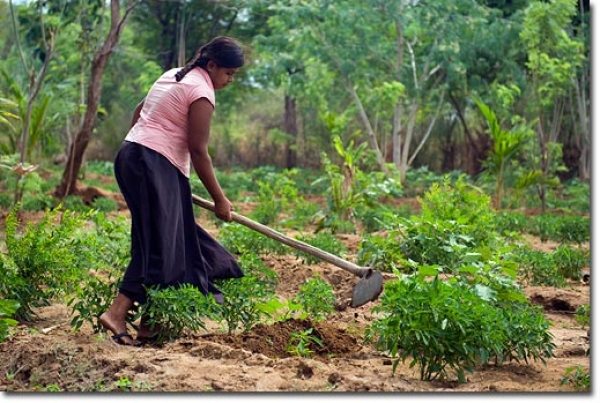
Smallholder Farmers Vulnerable To Climate Change
Sri Lanka and its people are feeling impacts of climate change. With changes in rain intensity, floods and with slow onset impacts of climate change such as droughts, as well as increased temperature levels, and impacts of scarcity of water, or losses due to too much water from floods, we feel the daily impacts of climate change.
These impacts increase already existing vulnerabilities, making those communities already impacts due to social and economic hardships to experience additional burdens. A community that is feeling these impacts is the small holder farmers whose hardships have worsened due increased frequency of flood and droughts. One such example are the farmers living in the Dry Zone of the country.
Impacts on Smallholder Farmers
The variability of the north-east monsoon which supports agriculture in the Dry Zone is evident through the increased number of high rainfall events followed by longer dry spells. Further, rainfall modelling indicate that large areas of the Dry Zone will receive less rainfall in the medium term. These impacts have direct consequences on the Dry Zone farmers. They are ridden with hardships due to lack of water, and the impacts increasing the scarcity creates additional pressure on Dry Zone agricultural households whose lives are already circumscribed by poverty, low incomes, and recovering from three decades of conflict.
The farmers suffer from threats to food security, health and decent livelihood. This is due to decreasing yields in farm fields due to decreased storage capacity, decreased availability of year-round safe drinking water due to longer drought, declining water quality and lack of adequate water storage, as well as increased crop losses and damage to livelihood and assets from severe impacts of climate change.
In order to address these issues, there is need to set up village irrigation systems such as small reservoirs to provide necessary water to small holder famers. In providing water resources, one needs to focus as a priority on small holder farmers who are poorer and more vulnerable than their Dry Zone counterparts who have access to major irrigation. In the case of a delay in monsoon or heavy rainfall during the sowing or harvesting period, there is risk for the entire cropping season to be damaged. And for farmers who cultivate under village irrigation systems, the crop from the Maha Season (NEM) is often their main source of income and household food. And in the event of crop damage, these farmers would be losing their main source of income for the year.
The way to address the risk of lacking sufficient water for agriculture would be to look into options of adaptive measures. This could be done through adaptation actions taken in river basins, and working towards providing smallholder farmers living in the river basins water through improved irrigation.
Actions need to be taken to enhance the lives and livelihoods of the smallholder farmers in the Dry Zone whose economic and social vulnerability are increased due to climate impacts on water and food security. Attention needs to be given to addressing these issues of vulnerable communities suffering from extreme weather events, and slow onset impacts of climate change.
Climate Finance for Sri Lanka
In order to address the situation in which the farmers of the Dry Zone live, actions on adaptation need to be taken. And to do this, there needs to be finance allocations for such actions. In brief, there is a need for climate finance in Sri Lanka, and specifically for adaptation based activities in the agricultural sector.
There remain options for climate finance for developing countries such as the Green Climate Fund (GCF), which was set up as an entity under the financial mechanism of the United Nations Framework Convention on Climate Change (UNFCCC). The GCF provides funding through direct access to developing countries for projects, programmes, policies and other activities. The funding allocation is to be provided in a balanced manner, for both mitigation as well as adaptation activities. The GCF also caters to both public as well as private finance, and has A target set at raising 100 billion dollars a year by 2020.
It is important that countries such as Sri Lanka, needing financing for adaptation efforts such as issues highlighted are able to access funding from the GCF. It is also important that the vulnerabilities of those impacted by climate change are identified, and their resilience is build. For this, the country needs a grant based financing mechanism which recognises the vulnerabilities, impacts, and that will set up concrete adaptation actions on the ground for effective and efficient actions creating change and benefiting those vulnerable to the impacts of climate change.
Source :25/07/2016 Asian Mirror http://www.asianmirror.lk/opinion/item/17290-smallholder-farmers-vulnerable-to-climate-change
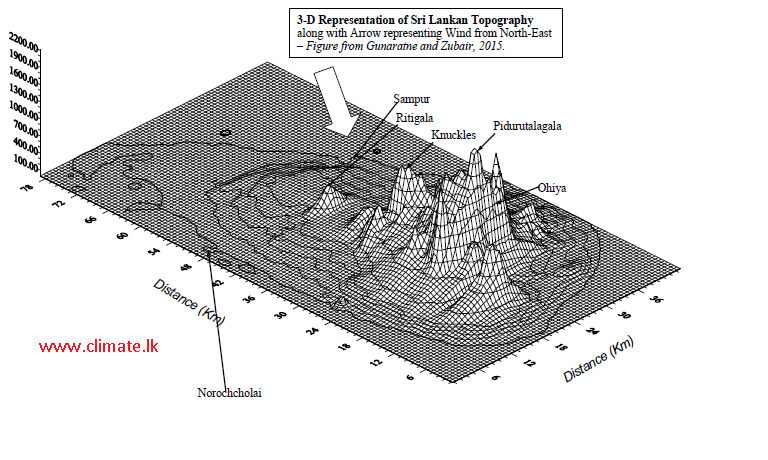
Is the Air Pollution Analysis for the Sampur Coal Plant Credible?
Where does the Wind take pollutants from Sampur?
As per modern myth, school texts, national atlases, and indigenous forecasters, the wind blows from the North-East over Sri Lanka at the turn of the calendar year. Even the birds know it. The transcontinental migrants draft on the North-Easterlies and steer to hone in to Hambantota for the Siberian winters. However, the analysis of atmospheric pollution in the Environmental Impact Assessment (EIA) for the coal burning power plant proposed at Sampur presumes that the wind blows from the South-East. On this discrepancy, rides not only the credibility of the EIA but impacts of profound consequence.
A 3-D visualization of Sri Lanka topography. Courtesy: Gunaratne and Zubair, 2015.
If the wind is from the North-East, it shall entrain the pollutants from Sampur towards the central mountain ranges from Ritigala to Namunukula. Mountains amplify the impacts of pollutants on atmospheric chemistry and cloud physics. Even a modest rise in toxic gases can have damaging consequences on the air people and animals breathe, the water they drink, and ecosystems. This can impact the quality of tea, agriculture and homegardens not on the slopes, and downstream and hydropower generation.
Coal burning power plants release dust and pollutants and toxins such as Mercury into the atmosphere. Every year, the Sampur plant is projected to vent 10,000 tons of Sulphur Dioxide, 10,000 tons of Nitrous Dioxide, 1700 tons of other particulate matter and other toxins and 4 million tons of Carbon Dioxide. These are monumental quantities that cry out for serious attention.
To show that this is safe, the EIA consultants from New Delhi, Mantec Consultants Ltd, rely on a computer model which tries to mimic the venting of these chemicals into the atmosphere. Such computer models are built on vast generalisations and shaky assumptions. To mitigate the shortcomings, all available data should be used after careful quality control and the results should be cross-examined.
The Wind over Sri Lanka from December to February
Mantec relies on one year of observations by Ceylon Electricity Board (CEB) at Sampur and another month of their own measurements. This is a hundredth of the wind observation that are available. It may be that the CEB instruments registered something extraordinary over Sampur from December 2012 to February 2013. This possibility should be entertained after cross checking the data against observations in the neighbourhood. Usually when one undertakes environmental observations in a new site, stringent checks should be undertaken. Often there are instrument errors, calibration errors or simply misalignment or errors in recording data. No reports on quality control have been presented. The “windrose” from Mantec which represents the direction from which wind comes and is shown here is consistent with the Mantec finding that the wind from December to February comes largely from the South-East.
The “Windrose” is a representation of which direction the wind comes from. The distribution of wind speeds from each direction December 2012 to February 2013 is shown as estimated by Mantec. Courtesy: Sampur EIA from Mantec.
The wind directions for December to February that Mantec has presented are at odds with measurements from the Department of Meteorology, the Air Force, by the Ceylon Electricity Board (CEB) elsewhere and our own institute in Kandy. Satellite wind observations and climate model simulations too present North-Easterly flows. There are dozens of research papers to confirm this – for example, the CEB observations at Sita Eliya (Zubair, 2002a) and Hambantota (Zubair, 1998).
Above: The average wind from observations during January at a height of about a km is shown as an arrow. The average rainfall is shown in shades of green and as contours. Below: Windrose for January for 16 years observation at China Bay, Trincomalee. The wind direction in this case is from the North-East.
Assumptions & Generalisations Regarding Wind and Air Pollution in the EIA
There are other causes for concern. Mantec have made the following inter-locking assumptions and generalisations:
a) The wind measurements in Sampur represents the wind across the East.
A better accounting of regional variation in wind is needed. There are variations due to location, storms, mountains and sea breeze. The sea-breeze and the desiccating mountain slope winds (“kachchan kaththa”in Tamil) affect Sampur in a particular way.
b) Wind observations at Sampur can be extrapolated to higher elevations
The CEB instrument does not reach the high elevations that the pollutants travel to. It is hard to capture the wind profile at higher elevations without observations. The assumptions in the software developed in the USA about the upper air should have been verified for our specific equatorial geography.
c) One year of wind observations is enough
The wind varies substantially from year to year variation of wind in Sri Lanka. For example, in some years there are storms and even cyclones. In other years, the El Nino alters the wind flow. One cannot just use one year of data to project for the next half century, if serious.
d) The past can represent the future
With climate change (Zubair et al., 2015), one cannot assume that the past represents the future. The EIA does not address the risks posed by climate change such as more frequent intense rainfall, cyclones, a rise in sea level or changing wind and storm patterns, all of it of relevance for Trincomalee.
These shortcomings could have been mitigated by making use of all available data, consulting past research, addressing inconsistencies and communicating what risks this analysis has not addressed.
Pollution Concentrations on the Ground According to the EIA
Based on these data and assumptions, the Mantec model estimates dispersion of dust, nitrous oxides, sulphurous oxides and particulate matter under idealised conditions. For example, there shall be no plant breakdowns or accidental large releases – both occurrences of undue frequency at Norochcholai. Essentially the model projects how much of the dust shall settle in the region just surrounding the power plant. They limit their analysis to 20 kilometres. The wind data for December to February largely blows from in-between the East and South-East directions.
The output from the Mantec model perplexes – for example, in the December to February period, the pollutants are carried towards the South-East and into the sea. In other words, the pollutants go against the wind. Nowhere on the earth’s surface is passive matter known to go against the wind.
Nitrous Oxide Pollution for Dec-Feb period as estimated by Mantec: The contours shows the peak concentration of nitrous oxides for a day due to the emissions. We inset an arrow to show the South-Easterly wind direction that the wind comes from according to Mantec. Notice, the contours with higher concentration is drawn towards the South-East against the direction of wind. In other seasons too, the pollutants appear to go against the wind in their models. Source: Mantec EIA Report.
In an attempt to validate the Mantec model results, the Industrial Technology Institute (former CISIR) was contracted by Mantec to undertake similar simulations. The ITI model – which is a commercial version of what Mantec used – too relies on similar assumptions and generalizations. They too use only one year of wind data albeit from a climate model run in the US and no ground observations. Not enough information is given in the EIA for comparison across seasons. However, the patterns of dispersion of pollutants they project is misaligned with that from Mantec and the pollutant concentrations is several times that from Mantec. The EIA does not reconcile the discrepancies which defeats the objective of validation.
Not matter how complex the models or are how attractive the outputs appear, the truth that all modelers live by – “Rubbish In, Rubbish Out” – holds.
What Can We Infer for Mountains and the Atmosphere Above us?
Wind and Rainfall in the North-East Monsoon
As the North-Easterlies winds take moist air up the mountain slope, it encounters cooler temperatures. As it cools, the water vapour in the air condenses into tiny droplets. These droplets forms only on tiny impurities that are found even in the pristine air in the East. These droplets keep growing into clouds until they are large enough till they burst and fall as rainfall. This mechanism is what gives us the heaviest rainfall on the eastern slopes of our hills from December to February (Zubair, 1999).
Increase the pollution levels even modestly, and the droplets shall become a mist rather than a rain cloud and pass over the mountains an onwards West. Not only can such slight increases in pollution reduce rainfall, it can also reduce solar radiation and change evaporation. It can reduce the flow in our eastern streams and disturb the ecosystems from the hills to the eastern coast directly.
Average Wind estimated from observations and simple laws of nature for December. The size of arrow for wind speed of 10 meters/second is shown at the bottom-right. Source: Gunaratne and Zubair, 2015.
Impacts of Pollution Streams on the Mountain Slopes
The sulphurous and nitrous oxide emissions along with the heavy metals can lead to toxic rainfall. This can have far reaching consequences on our climate, the health of humans, ecosystems, water supply, air we breathe, the quality of tea, agriculture, and hydropower generation. The contamination shall be not only on the eastern mountain slopes but be carried to the eastern slopes and and to the coasts by rain and rivers.
Two decades back, Prof. Oliver Illepurama’s research group undertook studies in Kandy and reported that air pollution levels for some of the gases released at Sampur were hazardous much more than in Kandy (Illeperuma and Abeyratne, 2002) – things have only got worse since (Illeperuma, 2015). Thus in Kandy, the only place we have data, it is clear that there is a hazard to public health from the additional risk from Sampur.
Learning from other Coal Plants
The surroundings of the Norochcholai power plant are covered in dust particularly when the wind blows from the South-West. No government body monitors and reports on it. And one can only describe this as willful and convenient blindness by the state.
As poorly anticipated, monitored and mitigated as the air pollution at Norochcholai is, the consequences at Sampur can be worse. The wind field and topography is such that the pollutants from Norochcholai are entrained away from our mountains but not that from Sampur.
Some argue that combustion technology and air scrubbing system is more advanced at Sampur Power Plant. This assurance needs to be taken with caution. A model “clean technology” coal power plant was installed 3 years ago in Mississippi, USA in much more advantageous circumstances, and despite all the promises and state support, it has only left massive pollution far and no one accountable to clean up (New York Times, July 5, 2016).
Credibility of the Air Pollution Analysis
When anyone proposes to experiment with our atmosphere by injecting millions of tonnes of chemicals for multiple decades, we should take extraordinary care. We must have air pollution projections which are transparently done, are scientifically defensible, and undertaken with integrity, technical competence and professionalism. The results should be presented openly and reviewed independently . By using air pollution models which are limited by design in what it can anticipate, by using input data that are suspect, by not consulting what is already known, by providing no credible validation, by limiting the checks to pollution levels at the ground alone, and by not being forthcoming about the limitations, the EIA process for the coal plants has not credibly addressed the danger ahead.
According to the EIA regulations (Zubair, 2002b), those affected should be informed and consulted in formulating the projects. If the fisher-folk of Sampur whose livelihood and health likely is compromised by this project and who know to live by their wits through an intimacy with the rhythms of the air and seas had been asked, they could have told the Consultants from New Delhi and Colombo and their clients, as to which way the wind blows.
References:
- Abeyratne, V.D.K. & Ileperuma, O.A., (2011). Air pollution monitoring in the city of Kandy: possible transboundary effects. Journal of the National Science Foundation of Sri Lanka. 34(3), pp.137–141. http://jnsfsl.sljol.info/articles/abstract/10.4038/jnsfsr.v34i3.3644/
- Illeperuma, O.A. (2015), Open Dalada Veediya to Reduce Air Pollution in Kandy, Island, January 23, 2015.http://www.island.lk/index.php?page_cat=article-details&page=article-details&code_title=118175
- Zubair, L., 1998, Diurnal and seasonal variation of surface winds at Hambantota, Journal of the National Science Council, Sri Lanka, 25(3).235-245p. http://jnsfsl.sljol.info/articles/abstract/10.4038/jnsfsr.v26i3.5006/
- Zubair, L., 1999, Modeling Orographic Rainfall in Sri Lanka, Meteorology Beyond 2000, Transactions of the Indian Meteorological Society, February 1999, 269-273.
- Zubair, L., 2002a Diurnal and Seasonal Wind Climate at Sita Eliya, Sri Lanka, Theoretical and Applied Climatology, 71 (1-2): 119-127.http://link.springer.com/article/10.1007%2Fs704-002-8212-2
- Zubair, L., 2002b, An Assessment of Environmental Impact Assessment in Sri Lanka,Environmental Impact Analysis Review, 21(5): 469-478. http://www.sciencedirect.com/science/article/pii/S0195925501000816
- Zubair, et al. (2015). Climate Change Impacts on Rice Farming Systems in North Western Sri Lanka, In Handbook of Climate Change and Agroecosystems: Global and Regional Aspects and Implications. D. Hillel, and C. Rosenzweig, Eds., ICP Series on Climate Change Impacts, Adaptation, and Mitigation, Vol. 3. Imperial College Press. http://nix.nasa.gov/search.jsp?R=20150010249&qs=N%3D4294966724







